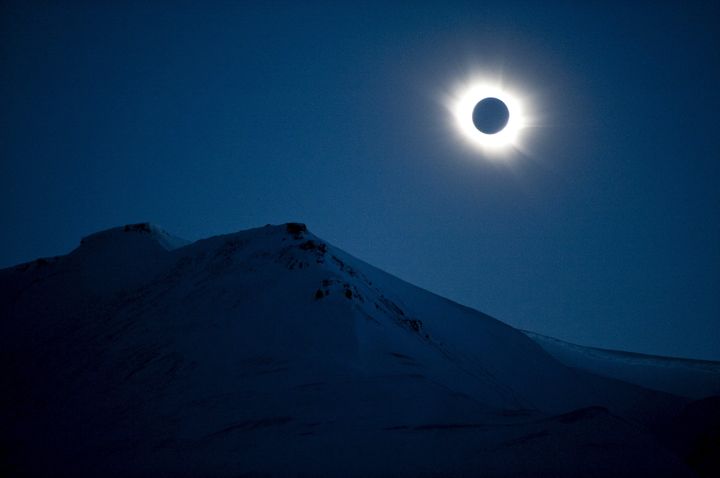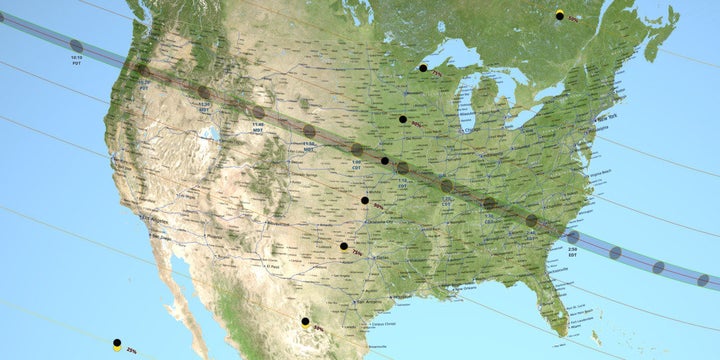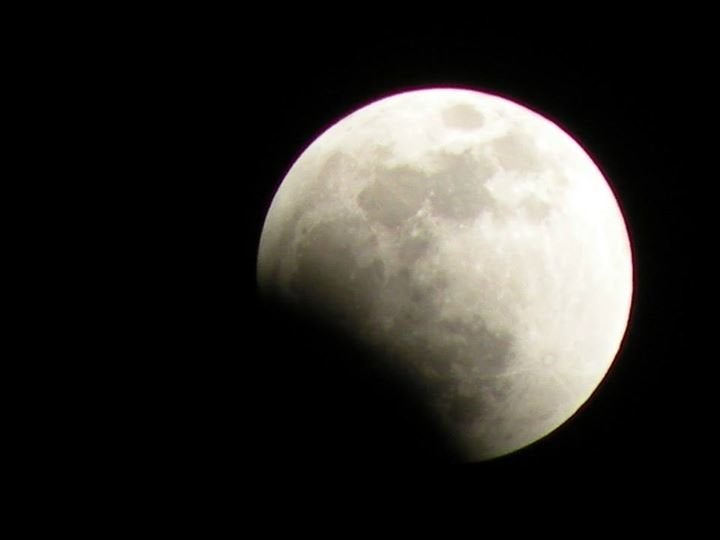For the first time in 99 years, a total solar eclipse will be visible on Aug. 21 to spectators across the contiguous United States.
As the moon moves between the Earth and the sun, the 68-mile-wide shadow it casts (called the “umbra”) will sweep across the Earth’s surface, moving around 1,200 mph along a path stretching from Oregon to South Carolina.
People in the center of the shadow’s path will be plunged into darkness for no more than about two and a half minutes. The temperature may drop 20 or so degrees, depending on the location. The wind may suddenly change direction. Stars, planets and the moon will become visible. Some animals might prepare for bed. (Probably not cows, though. A 1999 study found eclipses have “little, if any effect” on the ruminants.)
What’s it like?
Here’s how Mabel Loomis Todd, author of Total Eclipses of the Sun, described what she witnessed in 1894:
Then, with frightful velocity, the actual shadow of the moon is often seen approaching, a tangible darkness advancing almost like a wall, swift as imagination, silent as doom. The immensity of nature never comes quite so near as then, and strong must be the nerves not to quiver as this blue-black shadow rushes upon the spectator with incredible speed. A vast, palpable presence seems to overwhelm the world. The blue sky changes to gray or dull purple, speedily becoming more dusky, and a death-like trance seizes upon everything earthly...
Then out upon the darkness, gruesome but sublime, flashes the glory of the incomparable corona, a silvery, soft, unearthly light, with radiant streamers, stretching at times millions of uncomprehended miles into space, while the rosy, flame-like prominences skirt the black rim of the moon in ethereal splendor. It becomes curiously cold, dew frequently forms, and the chill is perhaps mental as well as physical.
In short, it’s something you probably don’t want to miss.

The earliest recorded total solar eclipse in human history can be attributed to the Chinese astrologers Hsi and Ho, who documented one on Oct. 22, 2134 B.C., according to NASA. But the Babylonians hold the record for the earliest successful prediction of a total solar eclipse: May 3, 1375 B.C.
The Vikings blamed eclipses on ravenous wolves eagerly chasing, and sometimes catching, the sun and moon as they raced across the sky. The Pomo tribe of the American northwest has a legend about the sun tussling with a bear. And the Serrano tribe in Southern California speculated the sun and moon were being consumed by the angry spirits of the dead.
Fortunately, witnessing a total solar eclipse no longer means facing hungry wolves, angry bears or restless spirits from the underworld. (Unless you want to. To each their own.)
Here’s what you need to know:
Never look at the sun without the proper equipment. Sunglasses alone aren’t sufficient, no matter how many pairs you may stack together. Track down some eclipse glasses. Number 14 welding glasses will also do the trick.
If you already have some eclipse glasses, be aware that NASA recommends you not use any that are more than three years old, or any with scratched or wrinkled lenses.
Alternatively, you can build a pinhole viewer out of a cereal box.
The further from the central umbra you are, the more the experience will seem like a midday dimming rather than a surreal midday darkness. So you want to be as close to the center of the band in this interactive map as possible:
Around 12 million people live directly in the path of the solar eclipse, and an additional 200 million people live within a one-day drive of it. That means you should plan ahead for traffic, and lots of it. If you can arrive a day or two in advance and/or plan to stay at your destination for a while, you’ll be a much happier camper. (Bonus points if you can spot Sasquatch at the same time.)
Can’t make it?
Even if you can’t make it to the narrow swath of land that will experience the umbra, the odds are pretty high you’ll still bear witness to an incredible show. All of the lower 48 states will see a majority of the sun obscured:

And if for some reason you have to miss the celestial event entirely, don’t sweat it (too much). Residents in central Texas, the Midwest and the Northeast will be near a total solar eclipse in April 2024. And in August 2045, another total solar eclipse will traverse the country, stretching from northern California to south Florida.


